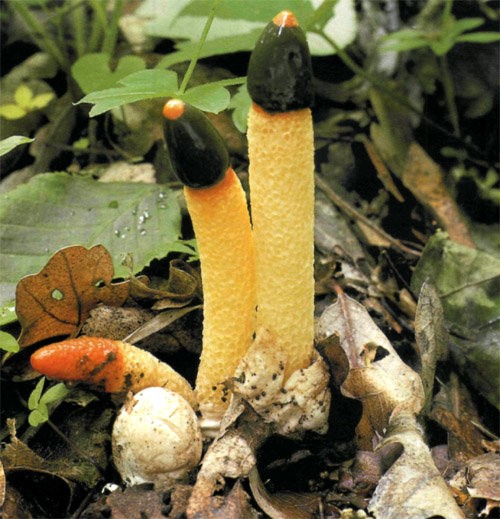Mutinus canine (Mutinus caninus)
- Division: Basidiomycota (Basidiomycetes)
- Subdivision: Agaricomycotina (Agaricomycetes)
- Class: Agaricomycetes (Agaricomycetes)
- Subclass: Phallomycetidae (Velkovye)
- Order: Phallales (Merry)
- Family: Phallaceae (Veselkovye)
- Genus: Mutinus (Mutinus)
- Type: Mutinus caninus (Mutinus canine)
- Cynophallus caninus
- Ithyphallus odorless
- Canine phallus

Mutinus caninus (lat. Mutinus caninus) is a saprobiotic species of basidiomycete fungi (Basidiomycota) of the fungus family (Phallaceae). Type species of the genus Mutinus.
fruiting body: in the first stage, canine mutinus is ovoid, oval, 2-3 cm in diameter, light or yellowish with a root process. When ripe, the egg skin breaks into 2-3 petals, which remain the vagina at the base of the “leg”. In the second stage, a cylindrical hollow spongy “leg” 5-10 (15) cm high and about 1 cm in diameter with a pointed thin, finely tuberculate tip grows from the opened egg. The stem has a light, yellowish color, and the tip is painted in a denser red-orange color. When ripe, the tip is covered with a brown-olive cellular mucus (spore-bearing). The unpleasant strong smell of carrion emitted by the fungus attracts insects (mainly flies) that carry spores on their body and legs.
spore powder in canine mutinus it is colorless.
Pulp: porous, very soft.
Habitat:
Canine mutinus grows from the last decade of June to October in deciduous forests on humus-rich soil, in shrubs, near rotting wood, in damp places, after warm rains, in a group, not often in the same place, infrequently.
inedible mushroom, although some argue that when the mushroom is still in the egg shell, it is edible.
The similarity: with the more rare Ravenelli mutinus









